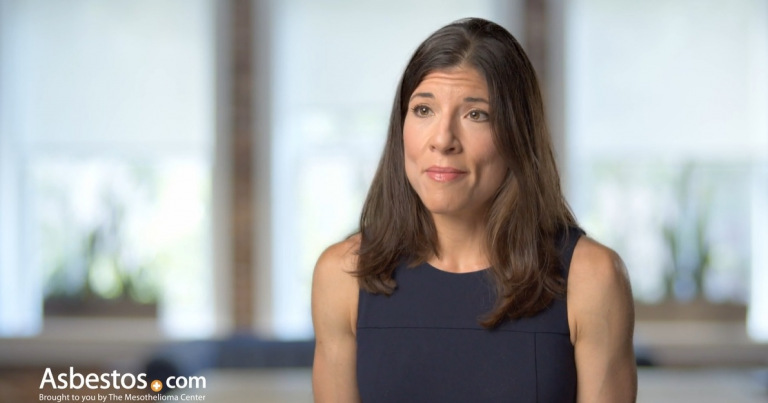Asbestos Legislation and Bans in the US
Most national laws trying to fully ban asbestos in the U.S. have failed. A limited number of asbestos uses are banned under various acts, but some remain legal. The Biden administration finalized a rule in March 2024 that specifically bans chrysotile asbestos.
Is Asbestos Banned?
Many uses of asbestos are currently banned in the United States. In March 2024, the Biden-Harris Administration finalized the U.S. Environmental Protection Agency’s chrysotile asbestos ban under the Toxic Substance Control Act.
This final rule only banned chrysotile asbestos. It also allows for different timelines to phase out particular uses. The ban on aftermarket asbestos automotive brakes and linings, oilfield brake blocks and other vehicle friction products is now in effect.
Banned Asbestos Uses
A patchwork of laws and regulations previously banned other uses and asbestos products. For example, in 1973 the EPA banned spray-on asbestos fireproofing and insulation. In 1978, the agency banned spray-on products that were not already covered in 1973. Over the decades, the EPA has banned a growing list of products posing asbestos exposure risks.
The Occupational Safety and Health Administration defines asbestos-containing materials as those with more than 1% asbestos. Manufacturers can label any product asbestos-free if it contains less than 1% asbestos.
Is Asbestos Still Being Used?
There are still legal uses of asbestos in the United States. The 2024 ban allows the chloralkali industry 5 years to find asbestos alternatives and convert their facilities. The industry uses asbestos fibers in diaphragms to make chlorine.
According to the U.S. Geological Survey, 224 tons of raw asbestos were imported into the country in 2022. USGS notes the chloralkali industry “has accounted for 100% of U.S. asbestos fiber consumption since no later than 2015.” There are 8 chloralkali facilities in the U.S. that still use asbestos diaphragms.
Asbestos Uses That Are Still Allowed
- Asbestos cement sheets: Most uses will be banned as of 2026, but titanium dioxide production and nuclear materials processing have 5-year phaseouts.
- Asbestos diaphragms: Chloralkali facilities have 5 years to transition to nonasbestos diaphragms to make chlorine used for water purification.
Most asbestos sheet gasket uses were given 2 years from the 2024 finalization. An exception to the titanium dioxide production is the Department of Energy’s Savannah River Site (a 310-square mile complex that processes and stores nuclear materials), which has until 2037 to find an alternative.
Some older products also still contain legacy asbestos. While it’s illegal to sell new products with the toxic mineral, you can still find legacy asbestos in some automotive parts, building materials, fireproofing and insulation.
5.0 rating | 150+ reviews | A+ BBB

Mesothelioma Survivors and the Push for a Complete Asbestos Ban
While asbestos ban efforts have made significant progress, the EPA reports asbestos products used in vehicles and oil industry equipment were imported into the U.S. as late as 2020. Legacy asbestos products also pose a health threat to construction workers, first responders, industrial workers, mechanics, members of the military, and anyone who works inside older buildings like schools.
This is why mesothelioma advocates are still fighting to pass stricter laws like the Alan Reinstein Ban Asbestos Now Act. If approved, the law would ban all uses of commercial asbestos and asbestos-containing products. The bill was first introduced in 2019. In March 2023, the legislature read it twice and referred it to the Committee on Environment and Public Works.
Linda Reinstein, co-founder of the Asbestos Disease Awareness Organization, has been working with legislators for years to ban asbestos. “Prevention is the only cure to asbestos-caused illnesses,” she tells us. “If there is no exposure, there is no illness. By banning asbestos, we limit the exposure people have.”
Mesothelioma survivors are at the forefront of raising awareness. Survivors and their families have testified before Congress, participated in the White House’s Cancer Moonshot initiative and helped shape asbestos legislation like the Asbestos Hazard Emergency Response Act and the Fairness in Asbestos Injury Resolution Act.
How Does Asbestos Legislation Control Its Use?
U.S. federal and state laws work together to regulate the use of asbestos, covering its use and abatement. Federal laws apply nationwide and mostly affect how asbestos is used in products.
Key Facts About US Asbestos Legislation
- State asbestos laws are similar in abatement but vary in asbestos litigation.
- Some states passed laws limiting compensation for sickness, death and lost wages.
- Congress passed federal laws to create compensation systems for other types of claimants.
The Asbestos Hazard Emergency Response Act of 1986, for example, regulates asbestos in schools. It orders the EPA to monitor school asbestos levels. It also established regulatory standards for inspections and abatement. All schools, public and private, must conduct asbestos inspections and develop plans for containment or removal.
Timeline of Asbestos Regulations
Asbestos regulations in the U.S. began in the 1970s after decades of heavy use in construction and industrial products. Some uses of asbestos were banned under a patchwork of laws and regulations, such as the Clean Air Act of 1970, the 1972 Consumer Product Safety Act and the Medical Device Amendments of 1976.
-
2010-PresentIn March 2024, the Biden administration banned chrysotile asbestos in the U.S. On April 25, 2019, the EPA issued a final rule on the Restrictions on Discontinued Uses of Asbestos. A Significant New Use Rule requires notice to the agency before using chemical substances in new ways that may raise concerns.
-
2000-2010The EPA revised the Asbestos Worker Protection Rule in 2000. The final rule became effective on Dec. 15, 2000. The revision amended the WPR to protect state and local workers from asbestos, like private sector workers. The rule adopted OSHA’s Asbestos Standards for these employees.
-
1990-2000The U.S. Congress amended the Bankruptcy Reform Act of 1994. It lets firms with big asbestos liabilities seek bankruptcy for future claims. These amendments were sometimes called the “Manville Amendments.” The provisions let manufacturers, like Johns Manville, file for bankruptcy.
-
1980-1990Asbestos Hazard Emergency Response Act of 1986 is a federal law. It requires the EPA to set standards for inspecting and removing asbestos in schools.
-
1970-1980The Consumer Product Safety Act of 1972 banned asbestos in artificial fireplace embers and wall patching compounds. The Toxic Substances Control Act of 1976 says the EPA can restrict substances including asbestos. The Medical Device Amendments of 1976 lets the FDA ban asbestos filters in drug manufacturing.
-
1960-1970The 1970 Clean Air Act classified asbestos as a hazardous pollutant. It gave the EPA the power to regulate its use and disposal.
-
1930-1960Medical evidence linked asbestos to deadly diseases. Asbestos manufacturers knew the risks. But many didn’t warn workers or the public. Asbestos-related health hazards weren’t widely known until the 1960s and 1970s.
Many industries profited from asbestos and resisted bans, but as the government passed laws in the 1970s and 1980s, its use declined. The growing awareness of asbestos-related diseases led consumers to demand asbestos-free products. Consumer sentiment further pushed manufacturers to phase out asbestos in their products and seek safer alternatives.
Asbestos regulations have evolved over the past century. The use, import and handling of the hazardous mineral are now strictly regulated. These regulations have helped reduce exposure.

Get help paying for mesothelioma treatment by accessing trust funds, grants and other options.
Get Help NowWhy Hasn’t the U.S. Fully Banned Asbestos?
Legal challenges, historical industrial reliance and economic considerations have all contributed to the U.S. not fully banning asbestos. The construction and manufacturing industries have actively lobbied against more rigid asbestos regulations. They advocate for some continued uses of asbestos and argue asbestos abatement is too expensive.
Attempts at enforcing a full ban have historically ended with courts ruling that the costs outweigh the benefits or that improved safety measures can reduce the risks. These challenges have made passing tighter and broader regulations difficult.
However, mesothelioma advocates continue to push for a full nationwide asbestos ban. A full ban could cut the risk of cancers such as mesothelioma. It may also lower health care costs. A total ban could create an improved long-term health outlook for future generations.
Past Attempts to Ban Asbestos
Many attempts have been made to ban asbestos over the years. For example, the EPA’s 1989 Asbestos Ban and Phase-Out Rule would have banned making, importing, processing and selling asbestos products.
In October 1991, the Fifth Circuit Court of Appeals overturned the ban following an industry-backed lawsuit. The court said the EPA failed to show the ban was the “least burdensome alternative” to regulating asbestos.
Acts That Attempted to Ban Asbestos
- Alan Reinstein Ban Asbestos Now Act
- Asbestos Ban and Phase-Out Rule
- Ban Asbestos in America Act
- Bruce Vento Ban Asbestos and Prevent Mesothelioma Act
In the absence of a national ban, some states have taken strong action to protect the public from asbestos. In June 2024, Michigan Governor Gretchen Whitmer signed bipartisan bills to protect people from asbestos exposure.
The bills address abatement projects and require public contracts to disclose certain information to the public. It also recommends an annual report on the asbestos emissions program for demolition or renovation.
Notable Worldwide Asbestos Regulations
Outside of the U.S., more than 60 other countries have banned the use of asbestos. In 1983, Iceland was the first country to ban all types of asbestos. In the 1980s and 1990s, Sweden, Denmark, Norway, Austria and Finland followed suit. These initial bans paved the way for global efforts to ban asbestos.
Asbestos Bans Across the World
Since 2005, the World Health Organization has fought for a global ban on asbestos to help combat the rise in mesothelioma and other asbestos-related diseases. In 2013, the WHO launched a plan to end asbestos use in its 190 member states by 2020. Unfortunately, it was never adopted.
Common Questions About Asbestos Bans and Regulations
- Has mesothelioma legislation been passed?
-
No specific federal legislation has been passed regarding mesothelioma.
Answered By: Carl Money, Mesothelioma Attorney, Nemeroff Law Firm
- Who can pass an asbestos law or regulations?
-
Congress can pass federal asbestos laws before the president signs them. States can also regulate asbestos use. Several agencies may also regulate asbestos. These include the Environmental Protection Agency, Occupational Safety and Health Administration, Mine Safety and Health Administration and the Consumer Product Safety Commission.
- What is OSHA’s policy for asbestos?
-
Specific standards cover asbestos hazards for general industry, maritime and construction.
-
Excursion Limit: The EL for asbestos is 1.0 fibers per cubic centimeter over a 30-minute period.
-
Exposure monitoring: Employers must track asbestos exposure. They must test workers exposed at or above the permissible exposure limit for 30 or more days per year.
-
Medical evaluation: Employers must test the health of workers who wear negative-pressure respirators.
-
Notification: If lab results show that the airborne fiber limit is exceeded, employers must notify employees of the actions being taken to correct the problem.
-
Permissible Exposure Limit: The PEL for asbestos in the workplace is 0.1 fibers per cubic centimeter of air over an eight-hour period.
-
Personal protective equipment: Employers must train all workers exposed to asbestos in the use of PPE.
-
Workplace assessment: Employers must check their workplace for asbestos. They must also assess if work will create airborne fibers.
-
Written opinion: Employers must get a written opinion from a doctor. It must assess the employee’s health and fitness to wear PPE.
-
- What is the asbestos reporting rule?
-
The asbestos reporting rule is a one-time requirement. It applies to companies that made, imported or processed asbestos from 2019 to 2022. The EPA finalized the rule under the Toxic Substances Control Act.
The TSCA requires companies to report asbestos types, amounts, uses and its presence. They must also provide employee data and the number of workers involved. The rule applies to companies with annual sales of more than $500,000 between 2019 and 2022. The EPA will use the reported information to consider future actions, such as risk evaluations and management.





